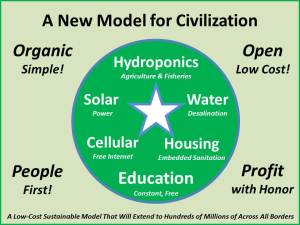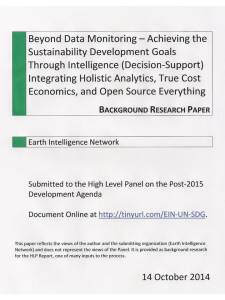 SHORT URL: http://tinyurl.com/EIN-UN-SDG
SHORT URL: http://tinyurl.com/EIN-UN-SDG
Beyond Data Monitoring – Achieving the Sustainability Development Goals Through Intelligence (Decision-Support) Integrating Holistic Analytics, True Cost Economics, and Open Source Everything
BACKGROUND RESEARCH PAPER
Submitted to the High Level Panel on the Post-2015 Development Agenda
DOC (23 Pages): Beyond Data Monitoring 3.4
See Also:
2014 Robert Steele Applied Collective Intelligence
2014 Steele on Intelligence in Ecuador (English)
Translatable Full Text Below the Fold
배 아래에 번역 전체 텍스트
Traduzível texto completo abaixo da dobra
النص الكامل للترجمة تحت طية
翻译全文下方折
Diterjemahkan Full Text bawah Lipat
ਫੋਲਡ ਹੇਠ ਅਨੁਵਾਦ ਪੂਰਾ ਪਾਠ
Перевести Полный текст ниже раза
This paper reflects the views of the author and the submitting organization (Earth Intelligence Network) and does not represent the views of the Panel. It is provided as background research for the HLP Report, one of many inputs to the process.
14 October 2014
Executive Summary
As the United Nations (UN) contemplates its most important new economic and social initiative, the seventeen new Sustainability Development Goals (SDG), to be manifest in the Global Sustainable Development Report and related UN System activities, it is essential that the Secretary-General be afforded an opportunity to recognize the radical changes that are taking place in the external environment – and how the UN can capitalize on them to accelerate achievement of the SDGs.
At a time when The UN is focused on data as a statistical artifact necessary to monitoring the current state and future progress, the world is experiencing the five stages of collapse identified by Dmitry Orlov: financial, commercial, political, social, and cultural. Monitoring is necessary but insufficient if the UN is to stabilize – stop – this systemic collapse, and enable achievement of the SDGs.
Beyond data monitoring – and a reliance on modest donor promises, many of which will fail to materialize – there is a brilliant world of holistic analytics, true cost economics, and open source everything engineering. This approach – pro-active and centered on ethical evidence-based decision-support – could – if implemented within the UN with a fraction of the promised funding for the SDGs – mobilize vastly greater resources; speed implementation of the seventeen SDGs, and therefore support the mission of the UN and its Member States in a manner much more effective than now possible.
Secretary-General Ban Ki-moon has since 2012 been seeking a solution – a tangible foundation – for moving beyond Government in harmonizing understanding, spending, and outcomes in relation to the UN Mission – particularly the SDGs. Intelligence (decision-support) is the means by which the UN can illuminate true costs, educate the public, eradicate corruption, and harmonize field effect.
The reality is that the Specialized Agencies (SA) and their information stove-pipes as well as their human networks are far removed from useful access and exploitation by the core elements of the UN responsive to the Secretary-General. Similarly, the data silos of all other organizations scattered across the eight information “tribes” that must be brought together to achieve hybrid governance (academic, civil society including labor and religion, commerce especially small business, government especially local, law enforcement, media, military, and non-government/non-profit) are all beyond any possible UN construct for near-real-time big data monitoring and sense-making.
A human-centric United Nations Open-Source Decision-Support Information Network (UNODIN) is proposed as a counterpart to the established data monitoring capability. UNODIN offers an opportunity, at very low-cost, to mobilize donations from over one hundred billionaires seeking impact investments far beyond the capabilities of the thousands of smaller lesser non-governmental organizations – while also helping tens of thousands of Chief Executive Officers (CEO) redirect their corporate spending in favor of sustainable profits that are directly tied to the seventeen SDGs.
By using intelligence (decision-support) to educate local to global publics away from unsustainable products, services, policies, and behaviors, and by promulgating open source everything solutions within each of the SDGs, the UN will accomplish its mission – its specific goals – faster, better, cheaper than anyone might have imagined. We must create an education-intelligence-research revolution.
Such a revolution would place the UN via UNODIN at the center of a global to local network of humans able to leap-frog past the obstacles inherent in data monitoring, able to achieve near-real-time understanding, self-governance, localized enforcement, and most importantly, localized self-sustainability. By combining a holistic analytic model useful at all levels, a commitment to rapidly documenting and promulgating true cost economic information, and a leadership role in creating open source everything engineering solutions relevant to each aspect of each SDG, the UN would become the catalyst for a financial, commercial, political, social, and cultural revolution. Nothing less will do.
Table of Contents
Introduction 3
The Secretary-General’s Perspective 4
What Is Intelligence? 5
Two Definitions of Intelligence 6
Open Source Intelligence (OSINT) and UN Requirements 6
Coherence Begins with a Wholistic Analytic Model 7
From Secret Intelligence for War to Public Intelligence for Peace and Prosperity 9
From Open Data to Open Source Everything 10
Total Impact True Cost Economics 12
Open Source Everything Engineering 13
Big Data Obstacles and Opportunities 14
Human Intelligence – Not Fully Exploited by the UN 15
Changing Socio-Economic Perspectives 16
Redefining Prosperity 18
Strategy for Creating Infinite Wealth 18
One Million Somalis — $500 Each – A Small Example 19
Conclusion – Decision-Support as a Catalyst for SDG Achievement 20
Endnotes 21
Table of Figures
Figure 1: Relative Costs of War versus Costs of SDGs – Plenty of Money Mis-Spent 3
Figure 2: A Proposed UN Variation of the Craft of Intelligence 5
Figure 3: Open Source Intelligence Utility for the UN Ten High-Level Threats 6
Figure 4: Foundation for a Comprehensive UN Analytic Model 7
Figure 5: Preliminary Holistic Analytic Model for Pro-Active SDG Interventions 8
Figure 6: 21st Century Intelligence – Potential Evolution of a Critical UN Capability 9
Figure 7: Proposed UN Engagement with Open Source Everything 10
Figure 8: Concept for UN Influence Rooted in Ethical Evidence-Based Decision-Support 11
Figure 9: Representative True Costs of a Single Product 11
Figure 10: Hand-Held Educational Application Acclerating SDG Achievement 12
Figure 11: PwC Concept for Measuring Total Ipact / True Cost 12
Figure 12: Potential UN Influence Over SDG Engineering at Every Level 13
Figure 13: Big Data Computing Constraints 15
Figure 14: The UN and the Eight Human Information Tribes — Enormous Potential 16
Figure 15: Coming Full Circle — Back to Indigenous Localized Sustainability 17
Figure 16: Concept for a New Localized Sustainable Model for Civilization 18
Figure 17: Rough Cost Calculation for Sustainable Resettlement of One Million Somalis 19
Beyond Data Monitoring – Achieving the Sustainability Development Goals Through Intelligence (Decision-Support) Integrating Holistic Analytics, True Cost Economics, and Open Source Everything
Earth Intelligence Network
October 2014
Introduction
The present path of the Independent Expert Advisory Group (IEAG) on Data Revolution for Development is focused on data as a statistical artifact necessary to monitoring the current state and future progress of seventeen Sustainable Development Goals (SDG). Building upon The Report of the High-Level Panel of Eminent Persons on the Post-2015 Development Agenda, A NEW GLOBAL PARTNERSHIP: Eradicate Poverty and Transform Economics through Sustainable Development (30 May 2013), the IEAG’s efforts should contribute substantially to the Global Sustainable Development Report now in prototype (1 July 2014). However, as we all contemplate what portion of the pledged $2.3 billion may materialize, two observations can be made relevant to strengthening existing and establishing new UN capabilities.
First, the actual cost of achieving the seventeen SDGs via traditional means is at least $230 billion a year, when we spend as an aggregate of Member States no less than $1.3 trillion a year on training, equipping, and organizing military forces. There is plenty of money available for achieving the SDGs, but absent a major shift in public and organizational consciousness, such remediation is highly unlikely, even with growing public awareness of climate change and of Ebola as a representative infectious disease.
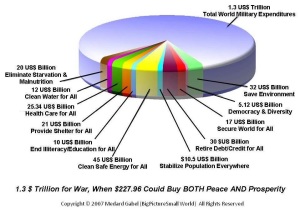
Figure 1: Relative Costs of War versus Costs of SDGs – Plenty of Money Mis-Spent
Second, and in the above context, the $2.3 billion that’s has been pledged is insufficient to achieve anything tangible against the varied SDGs but – and this is a most positive observation – it could easily fund a United Nations Open-Source Decision-Support Information Network (UNODIN) able to educate billionaires and Chief Executive Officers (CEO) as well as Member States and populations at large.
This background paper presents an alternative path for the money and the process. This alternative path strengthens the present endeavor, which should continue as the monitoring half of the process. This alternative path makes it possible for the UN to increase the amount of money it can influence. Building on earlier and most stellar Reports within the UN System – notably those dealing with Peace Operations, Threats, and Coherence – this alternative makes it possible for the UN to monetize vast troves of distributed information, to convert information into actionable collective intelligence, and through this new means, influence upwards from $250 billion dollars a year in both positive (interventionist open source engineering) and negative (buycott) spending[1]
The Secretary-General’s Perspective
The Secretary-General of the UN, Ban Ki-moon, the eighth Secretary General recently re-elected to a second term that will conclude on 31 December 2016 (he will be eligible for re-election to a third term that would conclude on 31 December 2020) has recently embraced—perhaps coincidentally—two big ideas that we have been communicating to his former Chef de Cabinet (Vjay Nambiar until February 2012). The Secretary-General writes:
It is my conviction that the global problems we face today are simply too complex to be solved by Governments alone. They require collective and coordinated action by Government, by the private sector, by civil society, by academia, and by international organizations and multilateral development banks. Over the next year, I will develop a comprehensive proposal which seeks to harness the power of partnership.[2]
Elsewhere he says:
Priority areas for support should be targeted, better matching these areas with goals and targets, and specific means and tools to reach them should be identified.[3]
Despite some excellent developments within the UN – we single out Umoja, the emerging but strictly internal Secretariat enterprise resource planning system (i.e. it does not include the autonomous Specialized Agencies or SA); the 2012 examination of Open Government Data as a basis for transparency, accountability, and collaboration; and the Secretary-General’s second term focus on learning, training, and research – the UN lacks a capability for intelligence (decision-support) with integrity (holistic analytics).
Everything now planned in relation to both the IEAG and the eventual final draft of the Global Sustainable Development Report is affirmed, endorsed, and stressed. It matters.
We need to go beyond this activity, the culmination of decades of hard work by tens of thousands of UN employees and affiliated external experts, and establish a capability within the UN that does not exist now and that is – in our view – essential if the SDGs are to be achieved and we are to create a prosperous world at peace, a world that works for all. The creation of UNODIN as a UN intelligence secretariat and local to global network, as proposed by this paper, is how we can satisfy the Secretary-General’s expectations and achieve the SDGs faster, better, cheaper than anyone has imagined to date.
What Is Intelligence?
Since at least the 1960’s the UN has struggled with the word “intelligence.” Similar struggles have surrounded the word “genocide.” While alternative terms can be found for the word “intelligence,” such as “decision-support,” it is helpful to outline with clarity and integrity what the craft of intelligence entails, and why it is so vital to the achievement of the SDGs as well as all other UN missions and goals.
Information costs money – intelligence makes money.
The truth at any cost lowers all other costs.
These two mottos of the Earth Intelligence Network (EIN), funded in 2006 by a now-closed commercial intelligence enterprise, Open Source Solutions Network, Inc. (OSS.Net) capture the essence. Intelligence is a process for converting information from a passive generic asset of interest to many (and hence somewhat indiscriminate) to an active precision intervention asset tailored to a specific decision-maker (or decision-making group) and focused on achieving a specific outcome at a specific time and place.
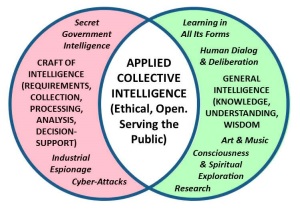
Figure 2: A Proposed UN Variation of the Craft of Intelligence
The concepts of collective intelligence and public intelligence have been under development in tandem since 1988. The particular integrating concept of Applied Collective Intelligence is validated by leaders of selected progressive groups and understood by them as illustrated above.[4]
Intelligence (decision-support) is how the UN can achieve the SDGs by influencing how the public, billionaires, CEOs, and Member States spend their money.
This background paper outlines a measured transformative initiative that the IEAG could recommend to the Secretary-General via the Under-Secretary-General for Economic and Social Affairs.[5]
Two Definitions of Intelligence
Intelligence, in the professional sense that applies within this paper, is both a process and a product. It is a root synonym for “decision-support.” The process of intelligence brings together requirements definition (what do we need to know, when, in what form, to what end); collection management (know who knows); source discovery and validation (legal ethical sources, largely human, in 183 languages); multi-source machine and human processing to achieve fusion and visualization; and finally the crafting of actionable intelligence (decision-support) that can be delivered to the individual or group that need to make a decision, in a form and in a time frame that makes it intelligence — actionable. Intelligence is generally a word, a paragraph, or a page – sometimes an annotated military chart (map), sometimes an image. Absent such precision, it is only information that has not been properly processed.
Intelligence is not Enterprise Resource Management (ERM), but it can and should support ERM by establishing and satisfying decision-support needs in the management of enterprise resources. In the case of the Secretary-General, whose ERM system is limited to the Secretariat, UN Intelligence can do much more in relation to both the Specialized Agencies and all parties external to the UN System, providing shared decision-support for strategy, policy, acquisition, and field operations.
Intelligence is not defined by secret sources and methods. Intelligence is about outputs, not inputs. Over 95% of all decision-support is not secret, not expensive, and not available to or from Member States, and certainly not to the United Nations. We are at the beginning of the third era of intelligence, the era of hybrid governance based on ethical evidence-based decisions among peers who share the raw information and the burden of sense-making.[6]
Open Source Intelligence (OSINT) and UN Requirements
It is vital to stress that no less than 75% and often 90-95% of what the elements of the UN “needs to know” is not secret, not expensive, and more often than not, not available to them via the Member nation-states.[7] Below is a published estimate of the relevance of OSINT to understanding and eradicating each of the ten high-level threats to humanity[8]
Economic and Social Threats, including 95%
01 Poverty 99%
02 Infectious Disease 95%
03 Environmental Degradation (includes Climate Change) 90%
04 Inter-State Conflict 75%
Internal-Conflict, including 90%
05 Civil War 80%
06 Genocide 95%
07 Other Large-Scale Atrocities 95%
08 Proliferation of nuclear, radiological, chemical, and biological weapons (many would add small arms as well) 75%
09 Terrorism (often mis-labeled and actually internal conflict) 80%
10 Transnational Organized Crime 80%
Figure 3: Open Source Intelligence Utility for the UN Ten High-Level Threats
The continued reliance of the UN on Member States for information, and the continued fragmentation of the UN among SAs largely unresponsive to the Secretary-General, are the primary obstacles to UN effectiveness across all of its mission areas, not only the SDGs.
As the Secretary-General has stated so clearly, we need to move beyond Governments. We would emphasize that we also need to move beyond data, beyond statistics, beyond monitoring. This one initiative, at very low cost, has the potential to transform the UN – and the role of the Secretary-General – such that the UN moves to a new level of influence and competency.
Coherence Begins with a Wholistic Analytic Model
Two errors have been made in our approach to sustainability these past fifty years. The first error was made by the Club of Rome in choosing the Limits to Growth project over its competitor. While both projects shared the same appreciation of where our Earth was headed in relation to Anthropocene impact, the Limits to Growth solution was based on top-down Member State regulatory direction that we now know is not achievable.[9] Its competitor concept sought to emphasize bottom-up public education; we now know that this is the only possible sustainable approach to achieving the SDGs[10]
The second error has been in relation to the fragmentation of education, intelligence (decision-support), and research. All three have been stove-piped in the Weberian tradition of knowledge “cubbies,” in which knowledge is treated as something best not shared – and in the case of governments, a fondness for secrecy and its attendant lack of accountability. Corporations have pursued the Western penchant for securing intellectual property – a fencing of the intellectual commons – and their own forms of secrecy have concealed true costs as well as feedback loops essential to our understanding of the whole.
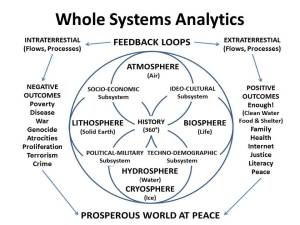
Figure 4: Foundation for a Comprehensive UN Analytic Model
A practical analytic model, one easily integrated into the current UN data system and also easily shared with all those external to the UN who might wish to contribute true cost economic data, feedback loop analytics, and return on investment (RoI) evaluations in relation to specific alternative applications of OSE engineering, is illustrated below. This version is based on the work of EIN since 2006, which is in turn rooted in the Report of the UN High-Level Panel on Threats, Challenges, and Change (the ten threats in priority order) and US presidential mandate for change books going back a quarter century (the twelve core policies where analysis and spending must be integrated in a Whole of Government manner).
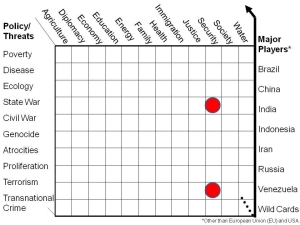
Figure 5: Preliminary Holistic Analytic Model for Pro-Active SDG Interventions
The eight “players” on the side add a third dimension to the preliminary analytic model. Wild Cards include Nigeria and Turkey, among others, as well as Arab nations with a great deal of wealth and an equal amount of very angry young men ready to revolt against their traditional leaders. We were inspired to add this dimension by Minister-Mentor Lee Kuan Yew (Singapore), who has observed that demography, not democracy, will define the future[11]
The BRICS – Brazil, Russia, India, China, and South Africa – are creating both an alternative world economic infrastructure that displaces the dollar and the World Bank and the International Monetary Fund, and also creating an alternative Internet. These measures are a logical response to the corruption of the Western financial and informational infrastructures best known today for the LIBOR scandal and the compromise of most US communications and computing capabilities in favor of mass surveillance by the National Security Agency (NSA). An alternative public intelligence model is also needed.
The UN can influence funding from the BRICS as well as funding from billionaires and CEOs, using this model. Beyond such funding, the UN can also influence trillions in unstructured spending by individuals.
From Secret Intelligence for War to Public Intelligence for Peace and Prosperity
The UN has been reluctant to study, adapt, and exploit the craft of intelligence because it has on the one hand assumed that the Member States would share with it such information as relevant and necessary; and on the other hand been terribly afraid of the connotation of the world “intelligence” as it has become so imbued – co-terminous with – spies and lies. Sadly the UN has also failed to develop a robust counterintelligence capability, such that it is preyed upon by a variety of actors who undermine its good works and great potential.
Below we illustrate our understanding of the logical progression from a current traditional focus on intelligence as secret, expensive, and the provenance of the Member States obsessed with inter-state conflict, toward a new appreciation for intelligence as a public good that is able to provide decision-support relevant to achieving all of the SDGs and eradicating all ten high-level threats to humanity.
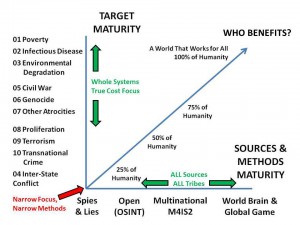
Figure 6: 21st Century Intelligence – Potential Evolution of a Critical UN Capability
In our view – and mindful of the relatively complete autonomy of the Specialized Agencies (SA) that are so vital to collecting data and monitoring progress against the SDGs – the UN has no alternative, if it wishes to be effective in the 21st Century, but to embrace the possibilities of UNODIN as a means of achieving voluntary inexpensive global to local coherence in advancing the SDGs.
UNODIN is above all a local to global educational network, making it possible to inform individual citizens of key facts in relation to everything they do and touch.[12] UNODIN reconnects humanity to UN leadership and mobilizes humanity as a non-violent intelligent force for peace and prosperity.
UNODIN enables the creation of infinite wealth for the 99% without threatening the wealth of the 1%.
From Open Data to Open Source Everything
The UN focus on Open Data is most encouraging and requires the strongest possible endorsement from all stakeholders, global to local. It is not, however, sufficient or effective in isolation. As many Member States have found, notably China and Norway, in the absence of Open Software and Open Hardware, Open Data is little more than a gift to corporations that capture the Open Data and then demand that all buy their proprietary and expensive offerings in order to read that data. In the USA almost 90,000 local governments are paying $4 per citizen a year for software licensing and maintenance[13]
The larger ecology of Open Source Everything (OSE) – a transformative ecology directly pertinent to achieving the SDGs in new ways with decision-support as the enabling bridge from costly legacy processes and products to new eco-friendly processes and products — is illustrated below.

Figure 7: Proposed UN Engagement with Open Source Everything
EIN has spent considerable time thinking about the education of the five billion poor. We believe that the Internet – and the next search engine that offers education on the fly, one cell connection at a time – are the means by which we transform education and eliminate the requirement for the poor to spend 6 to 12 years in prisons we now call “traditional education.” For this reason, OpenBTS (Open Base Transceiver Station) and Open Spectrum become vitally important. If access to the Internet is a human right as the UN has stated,[14] then OSE is the practical affordable, inter-operable, scalable method by which we achieve the SDGs, leveraging education of the public via hand-held devices – a total transformation of education – and through decision-support to those with money – billionaires, CEOs, and executives at all levels of the governments of the Member States.
With apologies for the complexity of the graphic, below is our depiction of how the combination of UNODIN and UN commitment to OSE can transform the role of the UN – and radically accelerate the achievement of the SDGs by making possible UN influence over hundreds of billions of dollars[15]
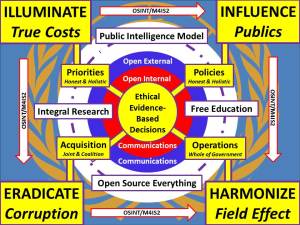
Figure 8: Concept for UN Influence Rooted in Ethical Evidence-Based Decision-Support
In the above graphic, the education-intelligence-research revolution starts with the illumination of true costs of every product, process, service, and behavior related to each of the SDGs is central. Below are the true costs of a single non-organic cotton T-Shirt.[16]
Water: 570 gallons (45% irrigation)
Energy: 8 kWh (machines), 11 to 29 grams fuel
Travel: 5,500 to 9,400+ miles
Emissions: Nox, SO2, CO, CO2, N2O, volatile compounds
Toxins: 1-3g pesticides, diesel exhaust, heavy metals (dyes)
Child Labor: 17 countries, 50 cents/day
Figure 9: Representative True Costs of a Single Product
We place more emphasis on education – one fact at a time, one Internet access at a time – than we do on the eradication of corruption. We believe the latter will occur rapidly from three convergent movements: first, the elimination of intermediaries from the donor chain – Ashraf Ghani’s concept of direct electronic deposits at the village level[17] is long over-due for implementation; second, the education of the public; and third, initiatives such as the (Mo) Ibrahim Prize for Achievement in African Leadership, a model for rapidly transitioning over 40 existing dictatorships toward effective democracy, while UNODIN and related initiatives empower citizens as participants in hybrid governance.[18]
Harmonization of field effect – which is say, achieving coherence across the UN System and all of the external actors that it interacts with – and achievement of the SDGs in the shortest possible time at the least financial cost with the greatest ecological and social benefits accruing, is the outcome.
Below is an illustration of the kind of hand-held educational impact the UN could have if it orchestrated a local to global interest in documenting true costs of each commercial product or service, and eventually of each government policy or citizen behavior.
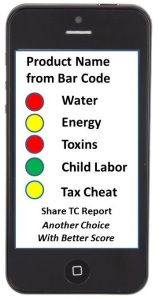
Figure 10: Hand-Held Educational Application Accelerating SDG Achievement
Total Impact True Cost Economics
We are deeply heartened by the discovery of the IEAG Background Research Paper “Measuring total Impact: A new Language for Business Decisions” (PriceWaterhouseCoopers (PwC) International, May 2013). We have appreciated this work from other sources,[19] and below offer an improved graphic adapted from their latest manifestation.
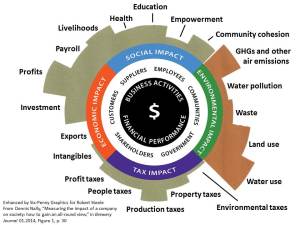
Figure 11: PwC Concept for Measuring Total Impact / True Cost
This work by PwC is very important and we hope it will become central to IEAG discussions and ideally central, along with our own ideas, to a new Report from the Undersecretary-General for Economic and Social Affairs, a living document backed up by a living database, of true costs associated with all elements within each of the SDG domains. That report would be a principal product of UNODIN and a globally distributed network of contributing authors drawn from all authors, all citizens, and all students.
It merits comment that PwC has also excelled at documenting waste within individual domains. Their study of US healthcare, finding that 50% of every healthcare dollar is waste, stands as an example for others to follow.[20] Waste on the order of 45-75% has been found by others across all the SDG domains from agriculture to energy to the military and water. Pro-active education by the UN along these lines will radically impact on SDG achievement.
In terms of using information to create intelligence to educate the public, move markets, and impact on the SDGs with something more valuable than money – distributed knowledge inspiring collective action – we find the PwC effort extraordinary, all the more so because it is respected by the Mars Family, among others, whose emphasis on “Mutuality Economics” opens a door for UN engagement.
We have identified 25 specific billionaires – most US but several not – whom the Secretary-General could approach individually and immediately to discuss this paper and the possibilities of UNODIN as a hub for public intelligence (decision-support) and open source engineering innovation.
Open Source Everything Engineering
It is fashionable today to speak and write of “Smart Cities” but such endeavors are what Dr. Russell Ackoff would call “doing the wrong things righter.” Connecting legacy devices created without regard to their true costs, and perpetuating industrial-era cities, whose waste by the one billion deprives the five billion and future generations of non-renewable resources, is foolish. Below is a graphic illustrating how OSE engineering (OSE2) can be informed by True Cost Economics (Supply Intelligence), Holistic Analytics (Demand Intelligence), and Open Source Everything (Engineering Intelligence).[21]

Figure 12: Potential UN Influence Over SDG Engineering at Every Level
The UN itself has known for some time that the current approach to agriculture is unsustainable. Recently it has made a most powerful statement, to wit, that we must return to and develop a more sustainable, natural, and organic agricultural system.[22] The same is true across all the policy domains, but no one, anywhere, is creating the compelling true cost economic databases needed to compellingly demonstrate the urgency of embracing OSE2 across every policy and investment domain.
At the same time, the negatives of fracking and other terribly mis-guided approaches to energy, are being ignored by governments and by publics. In the USA the National Intelligence Council went so far as to recommend fracking as an energy solution. Although California is now aware of its desperate situation in relation to declining aquifers, and the contamination of those aquifers by billions of gallons of fracking toxic waste, public awareness of the negatives is not the norm – and must be.[23]
Big Data Obstacles and Opportunities
We must begin with the fact that less than 1% of all big data is actually analyzed.[24]
Let us add to that the reality that most legacy databases were created in by-gone eras, are non-standard, tend to be heavy, and cannot be ported electronically (the pipes are in the 10MB to 100MB range while the data is in the TB to PB range)*, and also cannot be accessed for simultaneous processing at most data centers because they lack the excess processing capacity..[25] * MB = Megabyte 1,0002, GB = Gigbyte 1,0003, TB = Terabyte 1,0004, PB = Petabyte 1,0005, EB = Exabyte 1,0006.
Add to this the reality that relational databases were never designed for an era of big data, and the carriers have all been lazy about investing in dark fiber[26] and you have digital grid-lock. 21st Century multidisciplinary big data requires a soup to nuts design make-over.
Big Data is replete with myths and mal-practice. Only a tiny handful of experts are speaking clearly about the lack of “speeds and feeds” and the lack of residual processing capacity.[27] The fact is that less than 1% of the data we have – most of it data associated with legacy constructs – is processed.[28] The same is true of scientific papers submitted for publishing – only 1% are published.[29] Similarly, Google, by its own admission, indexes no more than 0.04% of the web, leaving the deep web – in 183 languages – invisible for most.[30] Big Data may be useful, eventually, in monitoring, but apart from fostering an OSE ecology, it is not the place to invest scarce funds if the UN actually wants to advance the SDGs in the near-term.[31]
On the next page is a single graphic illuminating the tsunami of change that is eluding the current communications and computing communities as they avoid deep thought in relation to the real-world constraints on big data collection, processing, analysis, and exploitation:[32]
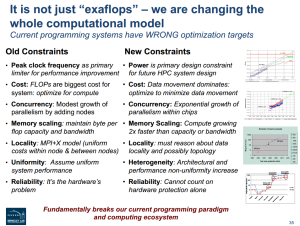
Figure 13: Big Data Computing Constraints
Here again we must stress the human factor – in contrast to computers costing trillions to date, the human brain has petaflop and higher speeds, is less than a liter in size, and requires only ten watts of power.[33]
Human Intelligence – Not Fully Exploited by the UN
This is not the place to detail all that UNODIN could accomplish if it applied the proven process of intelligence (decision-support). From citation analytics to deliberative dialog to citizen choice creating to localized rule-making and rule-enforcement, we will simply observe, with all humility, that humanity is operating on the basis of less than 2% of the relevant information in 183 languages, and doing so without the tools that Google should have but did not create.[34]
There are eight information “tribes” or networks that are operating in troubling isolation from one another. There are iron curtains between the tribes; wooden walls between organizations within each tribe; and plastic curtains between each pair of individuals within any given organization. Far beyond the limitations of the web, where less than 1% of published information is indexed by Google, lay the C drives, the analog bins, and the unpublished tacit knowledge including localized knowledge of enormous value if it could be accessed and aggregated and exploited in a timely actionable manner.
On the next page we illustrate what the UN accesses today, and its distance from everything else – as with the US secret intelligence world, the UN is accessing less than 2% of the relevant information.
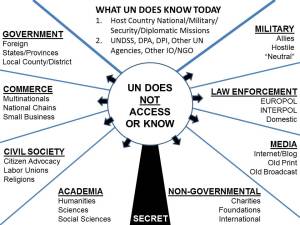
Figure 14: The UN and the Eight Human Information Tribes — Enormous Potential
The way is open, by fostering a universal appreciation for holistic analytics, true cost economics, and OSE2 applied to information-sharing and sense-making across the eight information “tribes,” to create the noosphere described by Pierre Tielhard de Chardin, the World Brain described by H.G. Wells, the World Game developed in prototype by Buckminster Fuller and Medard Gabel (the latter still living, active, and available to help the UN). Work has been done by the Collective Intelligence community, among whose leaders we know and recommend Tom Atlee, Pierre Levy, George Por, and Jim Rough – there are many others we do not know such as Violeta Bulk, a leading thinker on mass participation in innovation.[36]
UNODIN could enable the Secretary-General and the varied elements of the UN to harness the distributed intelligence of the whole earth in fact-finding, rule-making, enforcement, and innovation.[36]
Changing Socio-Economic Perspectives
Recently, in the aftermath of the global economic melt-down imposed by the London InterBank Offered Rates (LIBOR) scandal within the City of London and the rather destruction of multiple economies led by Goldman Sachs and other Wall Street elements, there has been a happy convergence between the 99% seeking alternative economic paths, and a hand-full among the 1% who now recognize that totally corrupt governments are not in fact effective at keeping the larger population quiescent.
Four groups of billionaires stand out: those led by Lady Lynn Rothschild, pursuing the concept of “inclusive capitalism;” those led by the Mars Family and its long-standing concept of “mutuality economics;” those loosely-emergent “black-sheep billionaires” based in both Europe and the West Coast of the USA focused on the idea of “redemptive capitalism;” and lastly, over 25 and perhaps as many as 100 billionaires discussed in general terms by Dr. Darrell West in Billionaires: Reflections on the Upper Crust (Brookings, 2014), all looking for “impact investments” far beyond what isolated non-government and non-profit organizations can provide today – only the UN, in our view, can lead a concept so grand – UNODIN – that it can attract $250 billion in direct donations serving as a permanent endowment for UNODIN, while also creating a capability that will easily impact on $250 billion a year in positive SDG-related investments.
Three big things have changed enabling the UN to credibly approach billionaires and CEOs with an alternative economic proposition and process for using decision-support to achieve the SDGs:
01 Unilateral top-down command & control is being replaced by hybrid multinational bottom-up consensus. Network enabled capabilities (NEC) are now predominantly about human trust.
02 Proprietary communications, computing, and information technologies controlled by the government and military are being replaced by alternative open technologies that leverage what everyone else already has. Humanitarian technologies have displaced secret technologies — they are more useful, more cost-effective, and more trustworthy.
03 Financial terrorism and predatory capitalism are being replaced by OSE2 as a technical enabler for wealth creation. Irrespective of competing financial and political interests, it is now possible to create self-sustaining villages where life has been virtually impossible. As long as one can marshal sunlight, dirt, and salt water, all free of charge, it is possible to thrive with ample supplies of clean water and hydroponically-grown food, while achieving — at the village level — prosperity and peace.
We have come full circle, returning to the deep cultural wisdom and appreciation for Earth that characterized our indigenous forbearers prior to the colonialization of the South by the West.
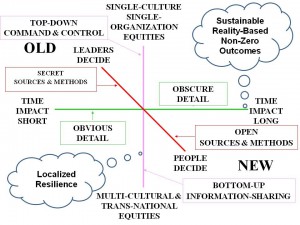
Figure 15: Coming Full Circle — Back to Indigenous Localized Sustainability
Redefining Prosperity
Both human understanding and critical technologies have advanced far beyond the understanding of most academics, civil organizations including labor unions and religions, corporations, governments, law enforcement, media, the military, and non-government/non-profit organizations. Hybrid public governance rooted in open-source decision-support — legal ethical evidence-based decision-support — is the wave of the future that we must all ride if we are to prosper.[37]
Below is an actionable concept for approaching the SDG’s “one village at a time” beginning with the displaced persons that are the epitome of extreme poverty, infectious disease, and environmental degradation – along with elements of genocide, other atrocities, terrorism, and transnational crime.
Figure 16: Concept for a New Localized Sustainable Model for Civilization
Strategy for Creating Infinite Wealth
Our strategy for creating infinite wealth is rooted in our recommendation that the Secretary-General be afforded an opportunity to consider – and then implement – UNODIN. This makes possible:
01 Global to local public education via cell connection, to begin eradicating waste at the point of sale
02 Global to local public education with respect to open source everything engineering alternatives.
03 Global to local community building creating informed alliances within and among the SDGs centered on the real-world concerns and needs of specific individuals and communities “in situ.”
One Million Somalis — $500 Each – A Small Example
A typical challenge that brings together a specific portion of humanity with a “clean sheet” opportunity to achieve the SDGs is offered by the million displaced Somalis scattered across UN-operated camps in Uganda, Ethiopia, and elsewhere. We were asked to calculate how best to apply US$500 million so as to relocate them and leave them in a fully self-sustaining state in new communities to be established in uncontested territory on the north east shore of Somalia.
Below are our calculations.[38]
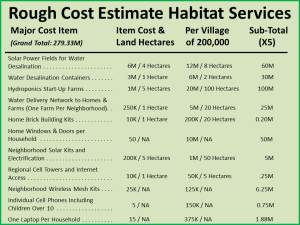
Figure 17: Rough Cost Calculation for Sustainable Resettlement of One Million Somalis
This is a notional example, calculated by one person drawing on rapidly-available online information augmented by a few direct conversations with practitioners actually doing the work elsewhere. UNODIN would do much better – and everything it develops, by virtue of being offered free to the public, would have a much larger sustainable impact across communities seeking to turn dirt, sunlight, and seawater into foundations for good living.
Others more qualified than we can compare the cost to the UN System and its donors as well as Member states and charities of keeping the million Somalis where they are now, displaced and impoverished. This paper offers the UN a 21st Century alternative approach to development.
Conclusion – Decision-Support as a Catalyst for SDG Achievement
There are three forces that the UN can integrate for effect to achieve the SDGs more quickly:
01 Billionaires seeing the need to depart radically from our present path;
02 Internet-enabled multinational information-sharing and sense-making;
03 True cost economics at the product, service, policy, and behavior level.
Education – and money allocated with precision to the electronic bank accounts of villages, organizations, and individuals – will radically accelerate the achievement of the SDGs. We create this ecology of transformation with ethical evidence-based decision-support (intelligence).
A common error among bureaucrats is to over-estimate the difficulty – the time-energy-money dynamics – of achieving radical transformative change. Intelligence done ethically, which is to say, intelligence that is above reproach and can be shared without constraint, is the critical enabler.
Our objective is to influence 10% of the billionaires, CEOs, university presidents, labor union leaders, religious leaders, and others. Ten percent. This is the tipping point percentage beyond which, if the UN is compelling and helpful to that 10%, the other 90% will follow.
If this paper reaches the Secretary-General and the Secretary-General agrees that UNODIN should be central to his bid for re-election and his third term to end in 2020, we can achieve the tipping point by 2020, and fully achieve the SDGs by 2050.
Document Online at http://tinyurl.com/EIN-UN-SDG.
Respectfully submitted,
/s/
Robert David STEELE Vivas
Chief Executive Officer (pro bono)
Earth Intelligence Network
11005 Langton Arms Court
Oakton, Virginia 22124 USA
Skype & Voice by appointment.
Email: robert.david.steele.vivas [at] gmail [dot] com
Personal Web Page: http://tinyurl.com/Steele2012
Public Intelligence Blog: http://www.phibetaiota.net
EIN Home Page: http://www.earth-intelligence.net
Endnotes
[1] An increasingly popular public tool for creating and joining buycotts against specific firms is offered by www.buycott.com. It would be a simple matter to extend that existing capability to support the individual SDGs.
[2] Report of the Secretary-General on the Work of the Organization, General Assembly Official Records, Sixty-seventh Session, Supplement No. 1 (New York: United Nations, 2012), in Section I. Strengthening the Organization.
[3] Ibid., in Section C. Development of Africa.
[4] Robert David Steele, “Applied Collective Intelligence: Human-Centric Holistic Analytics, True Cost Economics, and Open Everything,” Spanda Journal (forthcoming, December 2014) available in draft form.
[5] It could also be implemented by Baidu acting alone at first, and then as a new intelligence secretariat and network for the BRICS and a handful of other countries including Indonesia, Nigeria, Turkey, and selected Arab nations.
[6] Cf. Robert David Steele, “Peace from Above: Envisioning the Future of UN Air Power,” in A. Walter Dorn (ed.), Air Power in UN Operations: Wings for Peace (Farnham, UK: Ashgate Publishing, 2014), Chapter 17, pp. 297-316; “The Craft of Intelligence,” in Robert Dover, Michael Goodman, and Claudia Hillebrand (eds.). Routledge Companion to Intelligence Studies (Oxford, UK: Routledge, 31 July 2013); and “The Ultimate Hack Re-Inventing Intelligence to Re-Engineer Earth,” in Uffe Kock Wiil (ed.), Counter-Terrorism and Open Source Intelligence (Heidelberg, DE: Springer, 2011).
[7] Cf. Ben de Jong, Wies Platje, and Robert David Steele, Peacekeeping Intelligence: Emerging Concepts for the Future (Oakton, VA: OSS International Press, 1993). The book was on display in the lobby of 1 UN Plaza during General Cammaert’s tenure as Military Advisor to the Secretary-General.
[8] Robert David Steele, “Open Source Intelligence,” in Loch Johnson, Strategic Intelligence (Santa Barbara, CA: Praeger, 2006) Volume II, Chapter 6, pp. 95-122.
[9] “Reference: The Predicament of Mankind: A Quest for Structured Responses to Growing World-Wide Complexities and Uncertainties (Original Proposal to the Club of Rome),” Phi Beta Iota Public Intelligence Blog (hereafter PBI) (4 March 2012).
[10] This point is made by Will Durant in his 1916 doctoral thesis now available in most compelling form as Philosophy and the Social Problem, The Annotated Edition (Promethean Press, 2008).
[11] As cited in James F. Hoge Jr. and Fareed Zakaria (eds.), The American Encounter: The United States And The Making Of The Modern World: Essays From 75 Years Of Foreign Affairs (Basic Books, 1998) and placed in context by Robert David Steele in “8 Populations, 4 Methods,” The Huffington Post, 4 November 2010.
[12] This paper does not go into the specifics of creating a School of Future-Oriented Hybrid Governance, a World Brain Institute, a Global Game rooted in true costs and giving every citizen voice and vote over all issues, and other implementing capabilities. Such information is available on request – many people have spent decades preparing to create such capabilities, and tens of thousands of pertinent minds are available to be harnessed in a continuous living implementation of UNODIN – all that is required is the interest of the Secretary-General.
[13] Personal communication, Mark Dixon, Smarter Cities and Solutions Executive Architect – Western USA / North America, IBM (13 October 2014). His precise words: “As an example, in the USA, where there are almost 90,000 local government entities (cities, counties, municipalities, townships, etc. – 2007 US Census of Governments) one major city and its surrounding county in California are running the same human resource and financial system software and are paying approximately $4 per citizen a year for the duplicative software licensing and maintenance. Said software being one small part of the city's and county's IT operations. Now think about that on a national and worldwide basis…”
[14] Cf. Wikipedia / Right to Internet access.
[15] Cf. Robert David Steele, “Practical Reflections on United Nations Intelligence” + UN RECAP, PBI (22 November 2012).
[16] Cf. http://true-cost.re-configure.org/. The project was carried out over one year by then Executive Director of EIN, Mr. Jason Liszkiewicz.
[17] Ashraf Ghani and Claire Lockhart, Fixing Failed States: A Framework for Rebuilding a Fractured World (Oxford University Press, 2009), and related YouTube presentations by Ghani and Lockhart.
[18] On the 40+ existing dictatorships and how to bring them all to a close, see (Ambassador) Mark Palmer, Breaking the Real Axis of Evil: How to Oust the World's Last Dictators by 2025 (Rowman & Littlefield Publishers, 2005); on hybrid governance and extreme (informed) democracy see, among others, Wolfgang Reinicke et al (eds), Critical Choices. The United Nations, Networks, and the Future of Global Governance (IDRC Books, 2000); Tom Atlee, The Tao of Democracy: Using co-intelligence to create a world that works for all (BookSurge Publishing, 2002); and Jon Lebkowsky and Mitch Ratcliff, Extreme Democracy (Lulu.com, 2005).
[19] Dennis Nally, “Measuring the Impact of a company on society: how to gain an all-round view,” Brewery Journal (January 2014), Figure 1, p. 30.
[20] Mike Galper et al, “The price of excess: Identifying waste in healthcare spending,” (PwC, 2008).
[21] This improves on the original concept of the Center for Doctoral Training in Embedded Intelligence of Loughborough University in partnership with Heriot-Watt University and others.
[22] Cf. “UN Report Says Small-Scale Organic Farming Only Way to Feed the World,” TechnologyWater.com (14 December 2013).
[23] Cf. “2012 Global Trends 2030: Review by Robert Steele — Report Lauds Fracking as Energy Solution, Disappoints on Multiple Fronts,” PBI (11 December 2012), and “SchwartzReport: California Aquifers Contaminated with Billions of Gallons of Fracking Toxic Waste,” PBI (11 October 2014).
[24] Mary Meeker, “Internet Trends 2014,” Kleiner Perkins Caufield Byers (28 May 2014).
[25] Joel Hruska. “Supercomputing director bets $2,000 that we won’t have exascale computing by 2020,” ExtremeTech (17 May 2013).
[26] Newby, Hunter (2014). “Hunter Newby: Infrastructure Peering — A Physical Layer Understanding of Net Neutrality,” PBI (25 May 2014)
[27] Cf. Stephen E. Arnold and others viewable at Big Data @ Phi Beta Iota.
[28] Supra note 25.
[29] Erik Stokstad, “The 1% of scientific publishing,” Science Magazine (11 July 2014).
[30] James Bruce, “18 Fun Interesting Facts You Never Knew About the Internet,” MakeUseOf.com (31 December 2010).
[31] Cf. “The Truth About Big Data,” Datamation (26 September 2014), in which Gartner dispels some myths about big data and its effect on an organization's IT operations.
[32] Supra note 24.
[33] This point is made in the last sentence of James Bamford, Body of Secrets: Anatomy of the Ultra-Secret National Security Agency (Anchor Books, 2002).
[34] Cf. Micah L. Sifry, The Big Disconnect: Why the Internet Hasn’t Transformed Politics (Yet) (O/R Books, 2014). On human intelligence networks, for a government-oriented treatment, see Robert David Steele, Human Intelligence: All Humans, All Minds, All the Time (US Army Strategic Studies Institute, 2010).
[35] Find Professor Medard at www.bigpicturesmallworld.org. His most recent book is Designing a World that Works For All: Solutions & Strategies for Meeting the World's Needs – 2005-2013 Labs (CreateSpace, 2014).
[36] Cf. Violeta Bulc, “Mass participation in innovation – the foundation of a modern organization and beyond.” Although not recommended because it charges money for knowledge that should be free, a useful overview of the best thinking at the intersection of collective intelligence and systems innovation is provided by the September/October 2014 issue of Systems Research and Behavioral Science., see for example George Por, “Augmenting the Collective Intelligence of the Ecosystem of Systems Communities: Introduction to the Design of the CI Enhancement Lab (CIEL),” pages 595–605.
[37] Among our many advisors is Harrison Owen, creator of the open space conference technology. His most recent book, Wave Rider: Leadership for High Performance in a Self-Organizing World (Berrett-Koehler Publishers, 2008) is one we recommend to anyone considering the implications and possibilities of this paper.
[38] The original post is at “2013 Robert Steele $500 Million to Resettle 1 Million on a Moonscape with Sun, Dirt, & Salt Water….Exploring the Practical Edge of Intelligence with Integrity — Call for Substantive Ideas 2.0 Habitat Cost Sheet Posted,” PBI (25 January 2013).
[39] Gabrielle DeMarco, “Minority Rules: Scientists Discover Tipping Point for the Spread of Ideas,” Rensselaer (25 July 2011).



